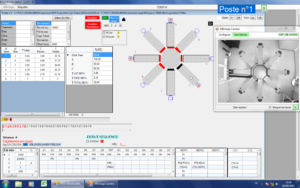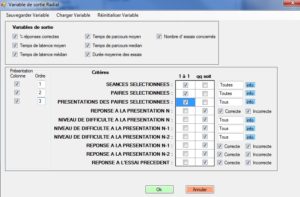The Radial Maze consists of an aluminum structure covered in PVC, forming a central platform from which 8 arms radiate. A videotracking system can accurately locate the animal in the center and in the arms. The access to each arm is controlled by an automatic door. At the extremity of each arm, a pellet dispenser distributes a food pellet in a slot hidden in the floor.
This apparatus is connected to an electronic interface, which provides the formatting of signals from sensors and allows the communication with the computer.
The position of the animal is detected by our Videotracking system.
The software allows:
A software module for managing data files allows the calculation of many output variables:
A large number of variables may be obtained. They are arranged in a Microsoft Excel compatible file.
An equivalent of the Radial Maze is available to conduct tests on Humans, please visit: Virtual Radial Maze.
The location of the animal is processed by our videotracking software.
We install the video camera in your room on an aluminium bar. No holes in the walls are required for the installation of the bar.
We propose solutions to couple the analysis of the behavior with electrophysiological recordings and optogenetic activation.
We propose:
We developed: